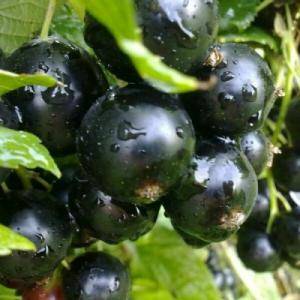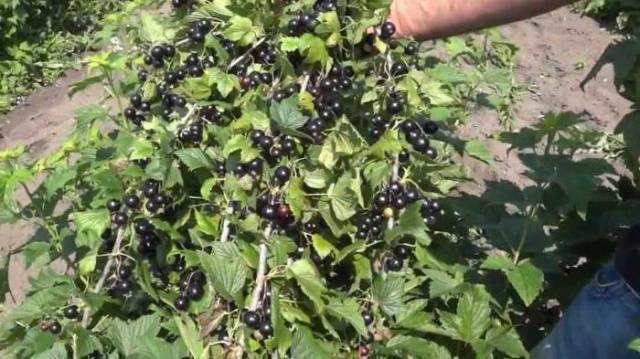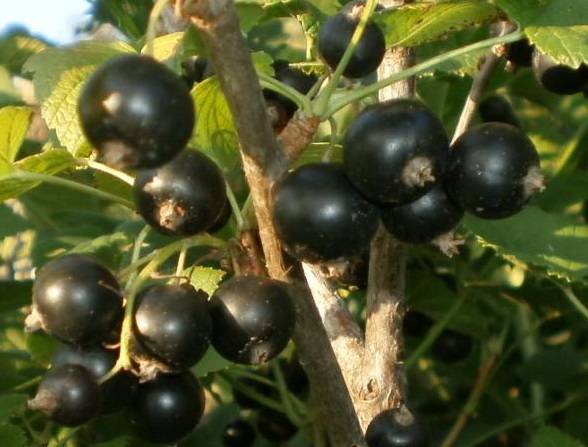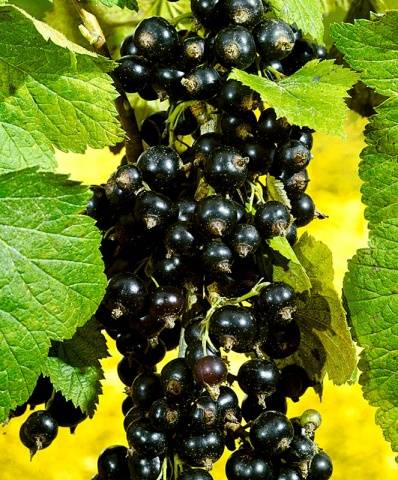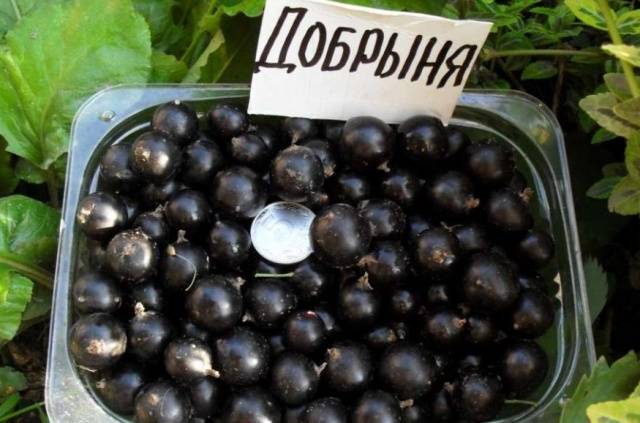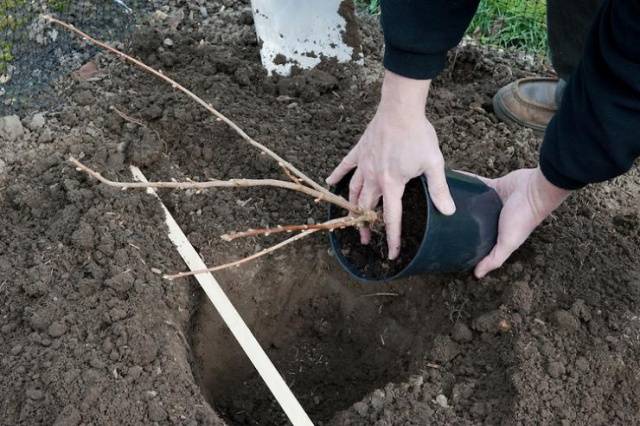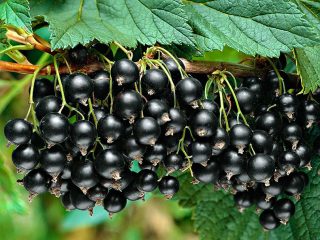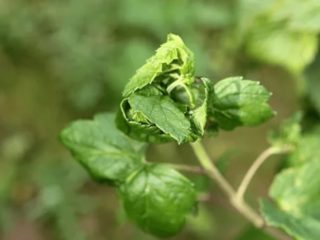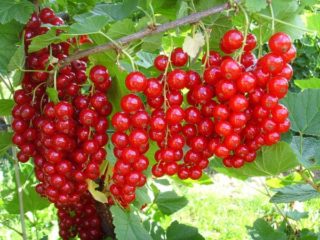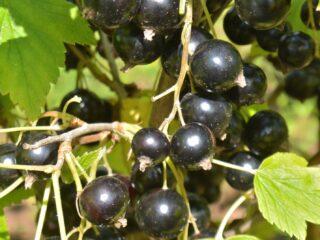Content
Black currants are grown in almost all summer cottages and backyards. Indeed, in burgundy-black berries there is a real storehouse of vitamins. The fruits are not only for culinary purposes, but are also an indispensable tool for the prevention and treatment of certain diseases.
Black currant Dobrynya is a relatively young variety from Russian breeders. But today you can already see positive feedback from gardeners and farmers growing this berry shrub. The characteristics of the variety are such that it is considered the best achievement of breeders.
Variety history
The author of the new variety of currants is AI Astakhov, Doctor of Agricultural Sciences, VNII Lupina. Thanks to interspecific crossing of our own variety Raisin and the variety-line hybrid 42-7, the black currant Dobrynya was obtained. From the Izyumnaya variety, the new hybrid plant took over the sweetness of the fruit.
The Dobrynya currant has been in the State Register since 2004. The plant was recommended for growing in the middle lane and in the south of Russia. But gradually the number of regions expanded. Today, the bushes of this variety, according to gardeners, have taken a worthy place on plots in almost all regions of our country.
Description of the variety
Despite the fact that the black currant of the Dobrynya variety is a relatively young berry plant, it confidently “walks” across the Russian expanses.
Features of the bush
According to the description of the originators, as well as gardeners' reviews, the black currant Dobrynya is a compact plant with erect shoots. That is why a neat and compact crown is formed. The height of the currant is within 170 cm. This parameter directly depends on the region where the bushes are grown.
The hybrid differs from other plants of the culture in the unusual color of young shoots. The bark on them has an olive-purple tint and a faint shine. Shoots are not too thick with slight pubescence.
Dark green leaves with five lobes, with noticeable wrinkling. The leaf blades are different in size, aligned. On each leaflet there are small cuts in the form of cloves.
Fruit
Dobrynya currant blooms with large, pale yellow flowers. In a thick green brush with small twists, up to 10 berries are tied. The cluster is not dense, but rather loose. Clusters form mainly in the middle and upper part of the branch, and not at the base.
The fruits of the Dobrynya black currant hybrid are large, the weight varies between 4.5-7 grams. Oval berries with a dense and elastic skin. That is why cracking of the fruit is not typical for the plant.
Currants are fragrant, rather sweet, as there is little acid in them. Taste properties were highly appreciated by tasters, got 4.8 points.
Dobrynya black currant variety:
Hybrid advantages
According to the description of the variety, reviews of gardeners and photos sent by them, we can conclude that there are clear advantages of the Dobrynya currant:
- The bushes are erect, compact, not spreading, therefore, there is a place for planting other crops.
- Large-fruited and early maturity is another important plus in the description and characteristics of the Dobrynya variety. The next year after planting, the plant begins to bear fruit.
- Stable harvest of sweet berries regardless of weather conditions. Just look at the photo, how large the berries are.
- The versatility of using berries: preserves, compotes, jams, jam. Frozen fruits of the Dobrynya variety retain all their vitamins and useful properties.
- Due to their high winter hardiness, currant bushes without shelter can be grown in regions where the thermometer does not drop below 25 degrees. In the rest of Russia, plantings are sheltered for the winter.
- Spring frosts or drought in summer do not negatively affect the Dobrynya black currant. The plant does not shed flowers or ovaries.
- Average yield, from 1.6 to 2.4 per bush. But this does not stop crop farmers, since the berries of the hybrid are in high consumer demand.
- Dobrynya currant bushes are practically not affected by powdery mildew.
How I would like to meet a garden culture, about which one could talk with admiration endlessly. Unfortunately, Dobrynya has some drawbacks, which gardeners write about in reviews:
- not too high yield for a modern variety;
- transportability, according to gardeners, is low, since the berries are caked and crumpled;
- serious problems with the survival rate of seedlings due to the slow formation of roots;
- susceptibility of the black currant variety Dobrynya to the kidney mite.
Landing features
As already noted, the Dobrynya currant has a problem with reproduction, the seedlings do not always take root. Let's take a step-by-step look at how to plant black currants correctly.
Stages:
- The hole is dug in advance. It should be 40 cm deep and 50-60 cm wide. The seats should be located at a distance of about one and a half meters to ensure sufficient air circulation. The row spacing is left within 2-2.5 meters. With this scheme, it is convenient to care for the bushes. In addition, plants are less likely to get sick.
- Black currants are demanding on the soil. It should have enough nutrients, so about 150 grams of wood ash, up to 5 kg of compost or humus are added to each pit.
- Before planting, be sure to inspect the root system of the bush. If there is damage, it is better to discard the seedling. The roots must be distributed throughout the hole.
- It is better to plant currants together. In this case, it will be more convenient to hold the bush at an angle of 45 degrees. The assistant fills the seedling with soil. The root collar should not be deeper than 8 cm, and the fruit buds should be flush with the surface.
- The soil around the Dobrynya currant seedling is trampled down to release air from under the roots.
- 10-15 liters of water are poured under each bush.
- Planting is immediately mulched to retain moisture. You can use compost, dry grass, rotted sawdust.
Planting care
Further care for the plantings of Dobrynya currants is traditional: watering, feeding, loosening, removing weeds, pruning and preparing for winter.
Watering features
It should be understood that the yield and taste of black currant depend on proper and regular watering.
In addition, excess water leads to decay of the root system and the death of the bush.
The bushes are watered in the near-trunk circles so that water does not flow out, they make circular grooves with high sides. Watering is performed once every 14-21 days. Up to 20 liters of water is poured under the root.
But at some stages of the growing season, currants require more moisture, up to 4 buckets under a bush:
- in mid-May, when the Dobrynya black currant berries begin to tie;
- in June, when the filling begins;
- before winter, when there are no leaves on the bushes of the variety, when performing moisture-charging irrigation.
Top dressing
Dobrynya black currant, like other varieties or hybrids, needs nutrients. The fertilizers that were added when planting seedlings are only enough for one season. A decrease in the nutritional value of the soil negatively affects the yield and the formation of the bush itself.
When and what to feed:
- In the spring, dry urea up to 50 grams is scattered into the trunk circle. Before this, abundant watering is necessary so that the fertilizer does not burn the roots.
- When the currants begin to release brushes, the bushes are watered with infusion of mullein, bird droppings.
- During the flowering period, you need to feed the Dobrynya variety twice with organic matter: mullein, chicken droppings or infusion of green grass, nettle.
- When flowers appear on the bushes of the variety, foliar feeding is carried out to stimulate the ovaries. For its preparation, take 10 grams of copper sulfate, 2 grams of boric acid, 5 grams of potassium permanganate per 10 liters of water. 2-3 liters are consumed per bush. After feeding, the berries will be larger and sweeter.
- When green berries form on the brushes, the Dobrynya black currant bushes are abundantly watered with clean water along a groove located in a circle and fertilized with chicken droppings.
- Before wintering, chicken droppings or compost (2-3 kg per plant) are laid under the bushes, but they are not embedded in the soil. Over the winter, this top dressing will decompose and prepare the currants for the new growing season.
Some gardeners write in reviews that they feed black currant bushes with non-traditional methods:
- For watering all summer, they use bread kvass, 2-4 liters per plant, or bury soaked and fermented bread.
- Potato husks are laid along the perimeter of the Dobrynya bush.
- Planted legumes are excellent green manures that are buried in the ground in the fall. These plants nourish the root system with nitrogen, activate the beneficial microflora of the soil.
Pruning rules
In order for the harvest of black currant to be stable from year to year, the bushes need to be rejuvenated. Shoots bear fruit for no more than 5 years, then the yield drops sharply. That is why every year an audit is carried out and old branches are cut out at the root.
Each bush should contain shoots of different ages. Young shoots are shortened by 15 centimeters so that side branches appear on them.
The root shoots of the Dobrynya black currant, if it grows strongly, is cut out all summer, leaving only powerful replacement shoots. In the spring, pruning is performed before the juice begins to move, as soon as the soil thaws.
